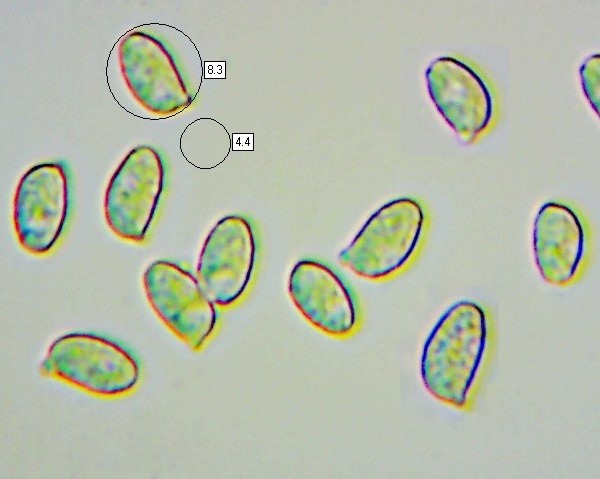Ramaria stricta (Pers.) Quél. - Upright Coral
Phylum: Basidiomycota - Class: Agaricomycetes - Order: Gomphales - Family: Gomphaceae
Distribution - Taxonomic History - Etymology - Identification - Culinary Notes - Reference Sources
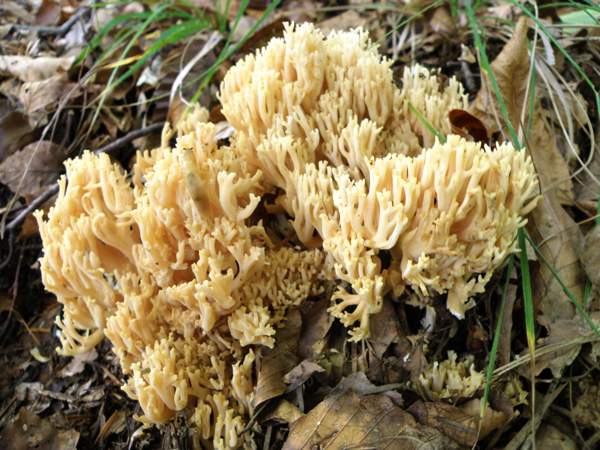
Although most Ramaria species are thought to be mycorrhizal, this fairly common coral fungus often grows on buried wood, mostly under Beech trees but also in coniferous forests. It’s possible that Upright Coral has a Jeckyll and Hyde lifestyle and that it may be either mycorrhizal or saprophytic.
Distribution
Fairly frequent in Britain and Ireland, Ramaria stricta occurs also throughout mainland Europe, where it is more common in southern countries.
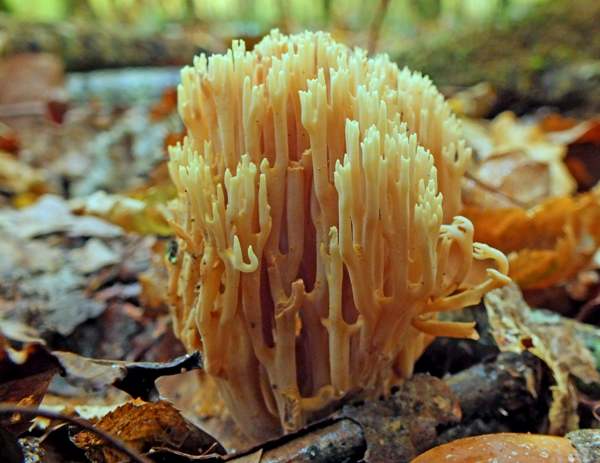
This colour-variable coral fungus is found also in several other regions of the world including North America, where it seems to be more common on the western side of the Continental Divide.
Taxonomic history
Upright Coral fungus was described in 1797 by Christiaan Hendrik Persoon, who gave it the scientific name Clavaria stricta.
The currently-accepted scientific name of this coral fungus is Ramaria stricta, and it dates from 1888, when the famous French mycologist Lucien Quélet transferred this species to the genus Ramaria.
Synonyms of Ramaria stricta include Clavaria stricta Pers., Clavaria condensata Fr., Clavariella condensata (Fr.) P. Karst., Ramaria condensata (Fr.) Quél., and Clavaria kewensis Massee.
The picture shown above, kindly contributed by Simon Harding, shows Upright Coral growing on the border between a graveyard and a playing field in southern England.
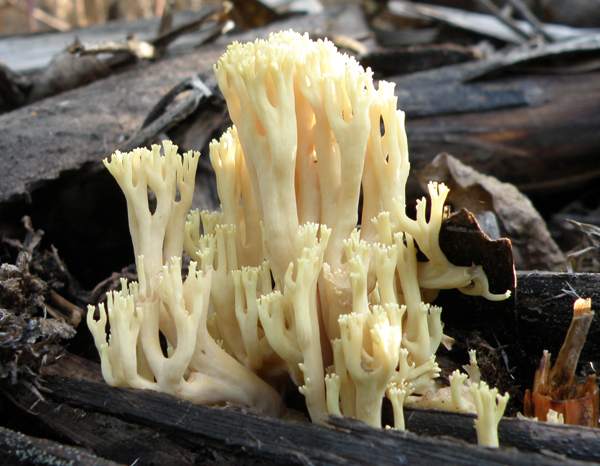
Etymology
Ramaria, the generic name, comes from Ram- meaning branch, with the suffix -aria meaning posessing or furnished with. Ramaria coral species are indeed furnished with numerous branches.
The specific epithet stricta simply means upright, and although Ramaria stricta branches (in the form of repeated dichotomous forks) all of the branches turn quite sharply to point upwards.
Identification guide
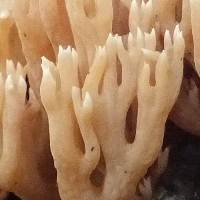 |
FruitbodyWhite or pale cream turning buff with age; tough and rubbery coral-like structure with a short base often ‘rooted’ in buried wood; the repeatedly forking, slender upright branches end in sharp tips; surface is smooth, often flattened; spores are produced on the coral surface, which turns wine-red when bruised. 4 to 10cm tall and up to 8cm across the whole fruitbody. |
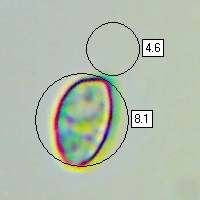 |
SporesElongated ellipsoidal or oblong, surface minutely warted, 7-10 x 4-5µm; inamyloid. Spore printCinnamon-ochre. |
Odour/taste |
Mature fruitbodies smell faintly of aniseed; the taste is not significant. |
Habitat & Ecological role |
Mycorrhizal or saprobic. on stumps or buried wood often under Beeches but also occasionally with conifers. Evidence that Ramaria stricta can sometimes be saprobic rather than mycorrhizal comes from its frequent appearance in flowerbeds and other areas that have been mulched using wood chippings. |
Season |
July to November in Britain and Ireland. |
Similar species |
Ramaria formosa is pink or orange and its branches do not turn so immediately upright. |
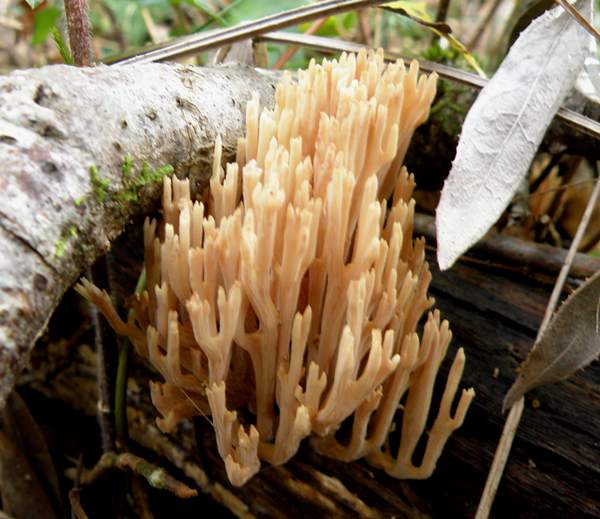
Culinary Notes
Upright Coral is insubstantial and it is generally considered to be inedible. Note also that some coral fungi that look quite similar to Ramaria stricta are known to be poisonous.
Reference Sources
Fascinated by Fungi, 2nd Edition, Pat O'Reilly 2016, reprinted by Coch-y-bonddu Books in 2022.
Dictionary of the Fungi; Paul M. Kirk, Paul F. Cannon, David W. Minter and J. A. Stalpers; CABI, 2008
Taxonomic history and synonym information on these pages is drawn from many sources but in particular from the British Mycological Society's GB Checklist of Fungi.
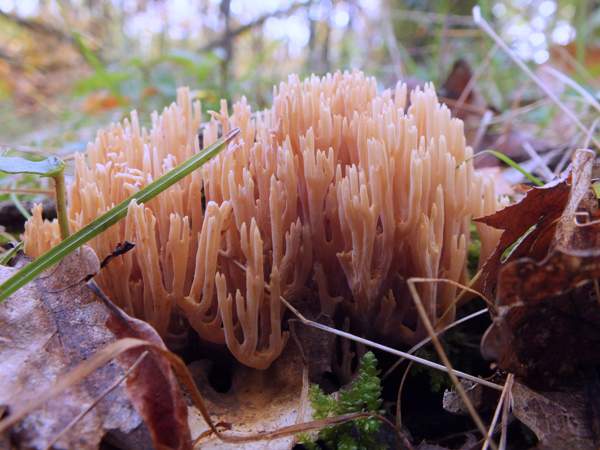
Fascinated by Fungi. Back by popular demand, Pat O'Reilly's best-selling 450-page hardback book is available now. The latest second edition was republished with a sparkling new cover design in September 2022 by Coch-y-Bonddu Books. Full details and copies are available from the publisher's online bookshop...
